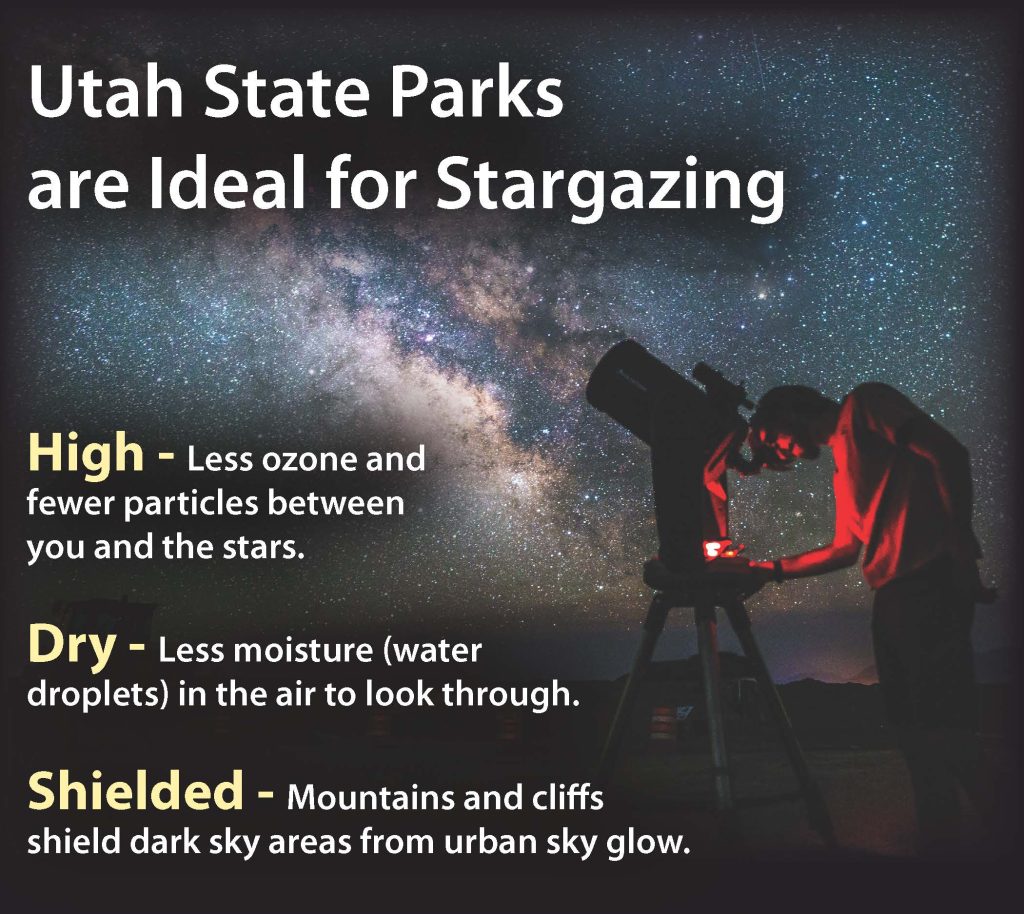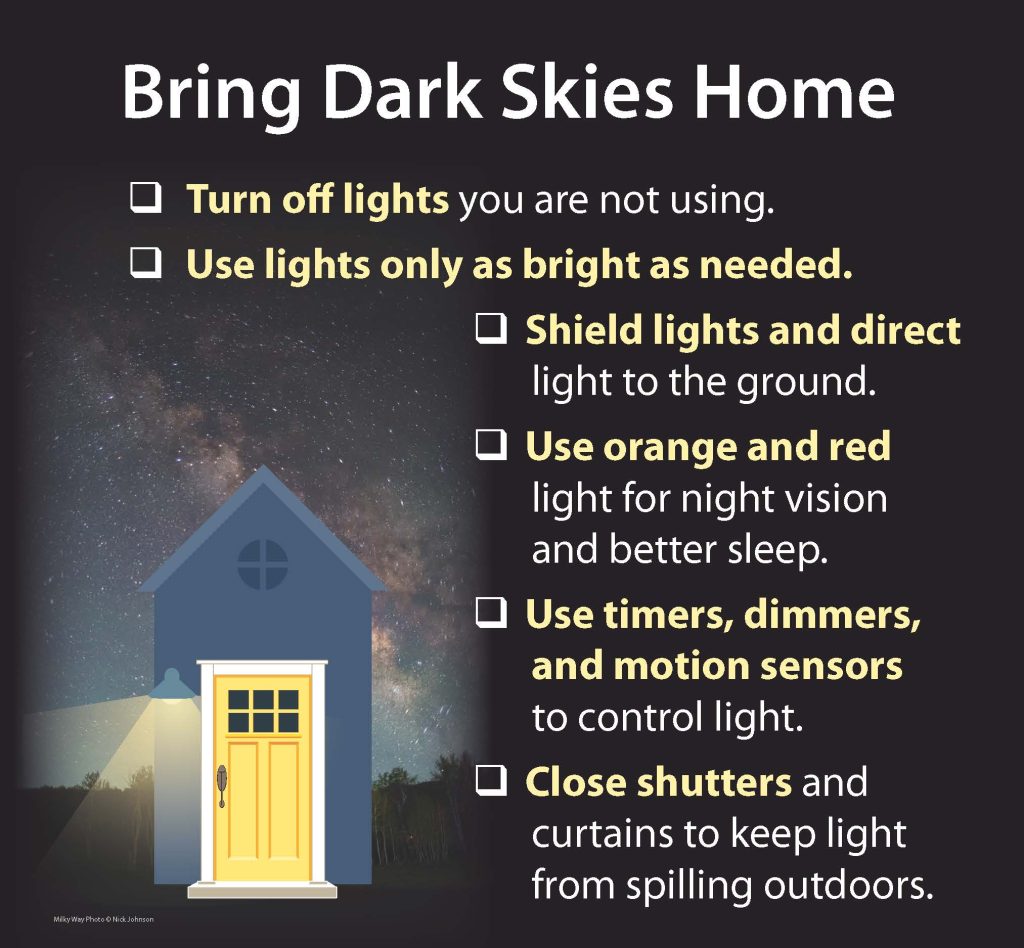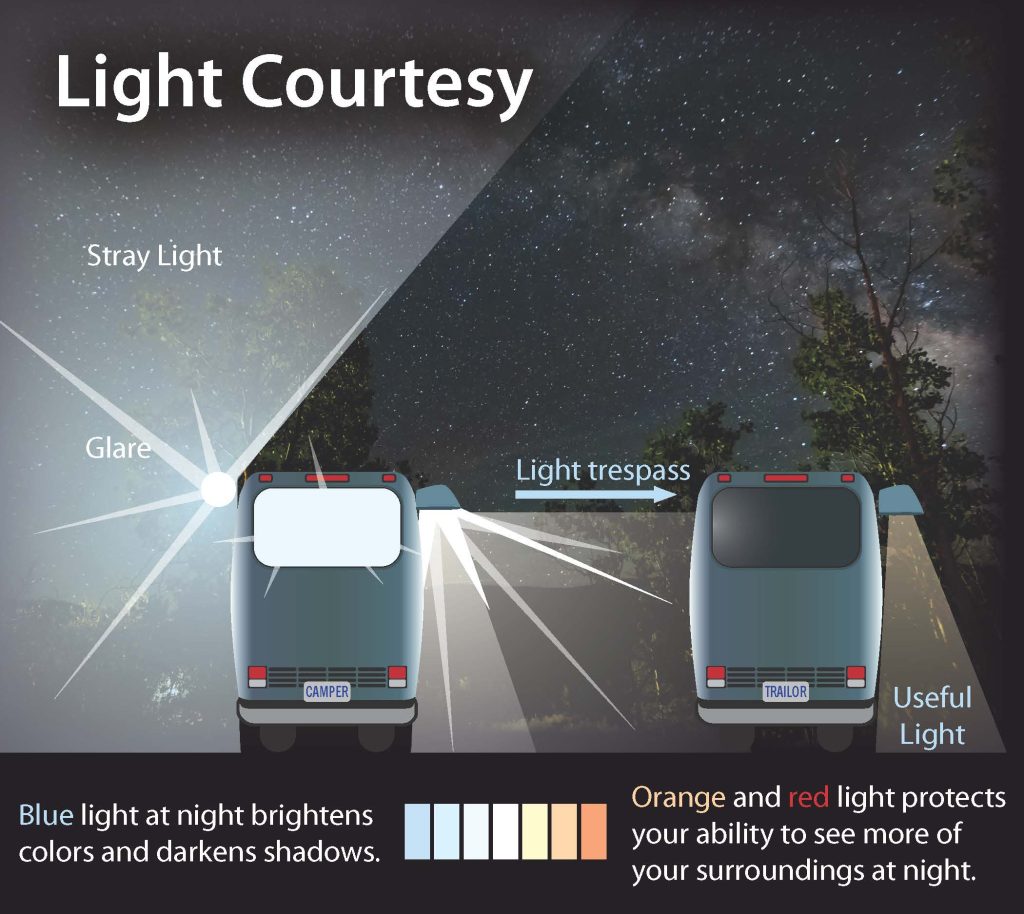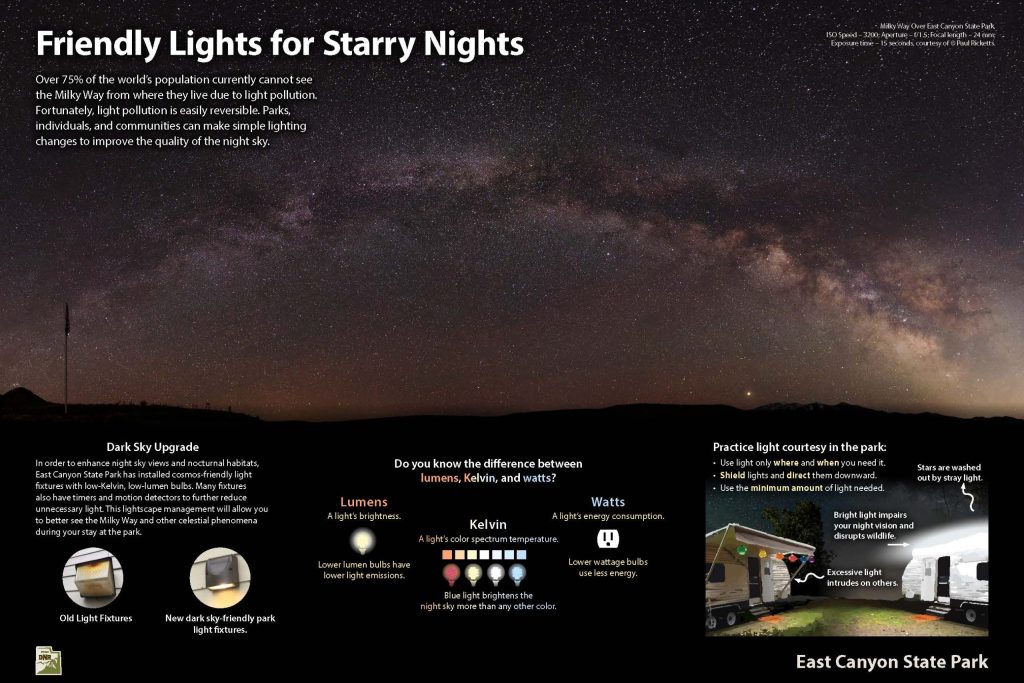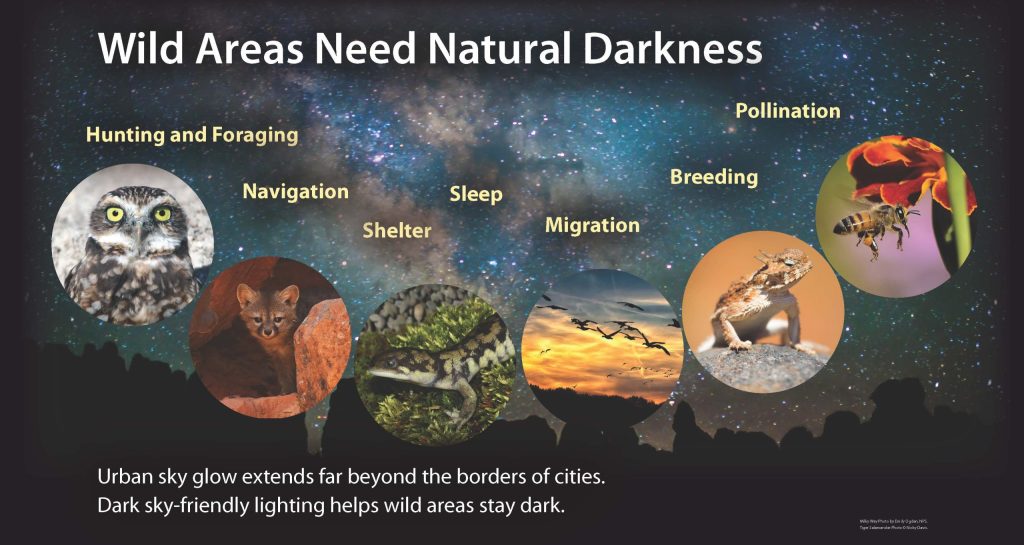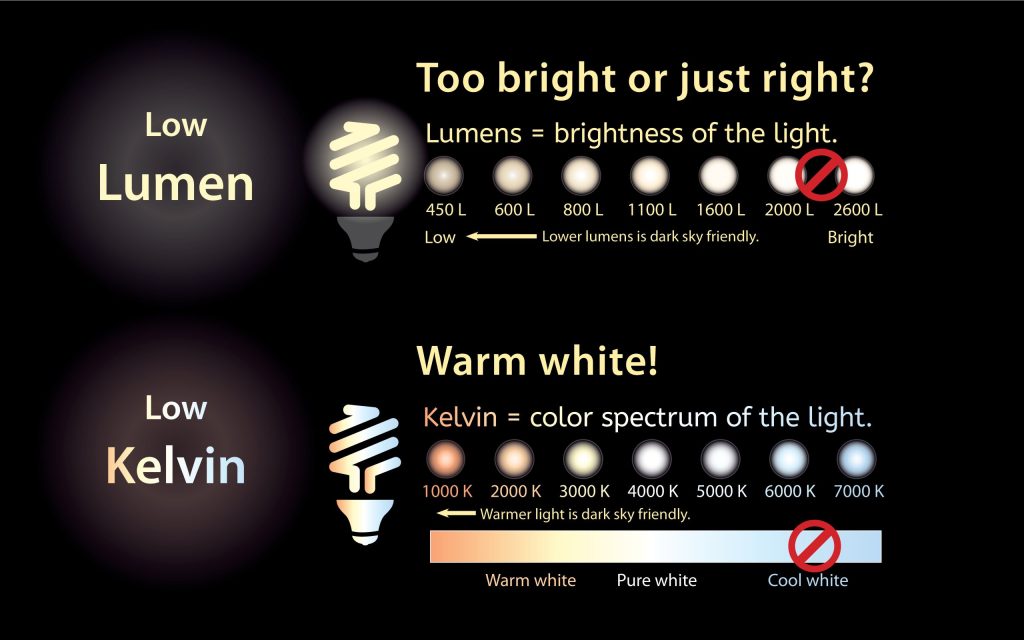International Dark Skies Certified
“Dark skies” refer to areas or environments that have minimal light pollution, allowing for exceptional stargazing and preservation of the natural night environment. These areas are often sought after by astronomers, nature enthusiasts, and organizations dedicated to preserving the night sky.

Characteristics of Dark Skies:
- Limited Light Pollution: Dark sky areas have minimal artificial lighting, ensuring that the natural darkness of the night sky remains largely undisturbed.
- Enhanced Stargazing: With reduced light pollution, stars, constellations, and celestial objects become more visible, offering breathtaking views of the cosmos.
- Protection of Nocturnal Ecosystems: Dark skies contribute to the protection of nocturnal habitats and wildlife, whose behaviors can be disrupted by excessive artificial light.
- Preservation of Cultural Heritage: Many cultures have deep connections to the stars and night sky. Dark sky areas help preserve these cultural connections by allowing clear views of celestial bodies.
International Dark-Sky Association (IDA):
The International Dark-Sky Association (IDA) is an organization dedicated to preserving dark skies worldwide. They work with communities, parks, and other entities to mitigate light pollution, promote responsible outdoor lighting practices, and designate areas as official International Dark Sky Places.
Benefits of Dark Sky Preservation:
- Health and Well-being: Reduced light pollution positively impacts human health by allowing for better sleep patterns and reducing disruptions to circadian rhythms.
- Ecological Balance: Protecting dark skies supports the natural cycles of nocturnal animals and maintains the balance of ecosystems.
- Scientific Research: Dark sky areas offer ideal conditions for astronomical research and observations.
Preserving dark skies involves efforts to control and minimize unnecessary artificial lighting, utilize appropriate lighting fixtures that minimize upward light emission, and raise awareness about the importance of reducing light pollution for the environment and human well-being.
